Australia So Much to See


With the day running out, we had to miss The Moss Garden where the moist climate preserves another pocket of lush green remnant rainforest. Some travellers say it is their favourite, so perhaps we should have found the time and energy to include it. The Moss Garden
is one of the closest features to the start so the one to leave for another day, but we were unable to stay any longer.
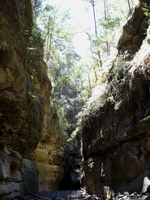
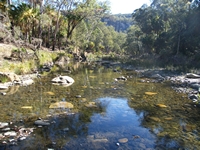
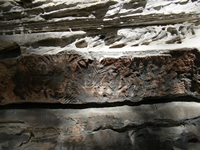
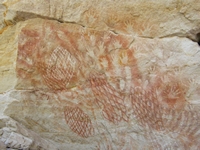
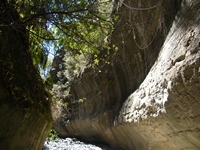
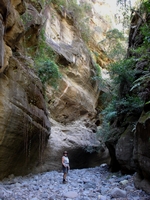
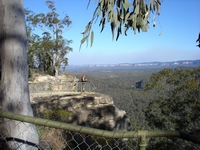
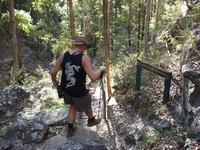
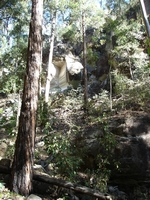
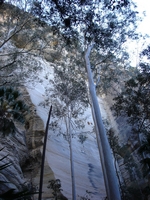
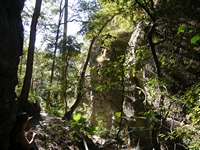
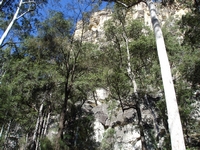
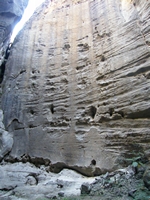
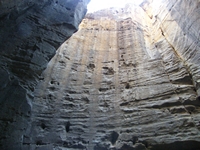
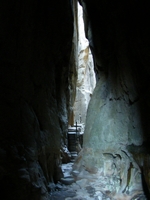
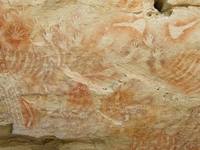
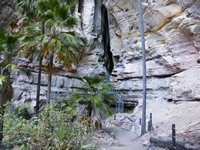
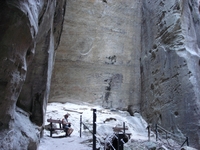
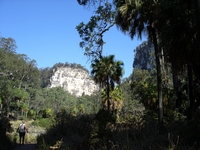
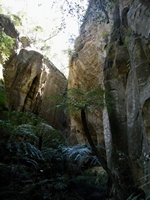
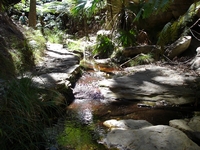
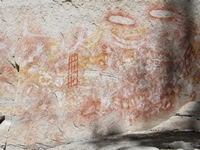
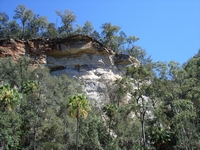
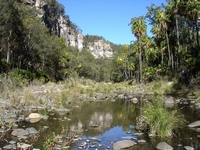
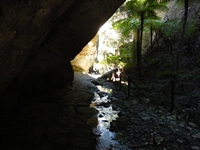
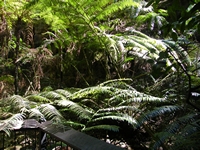
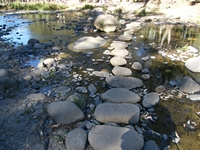
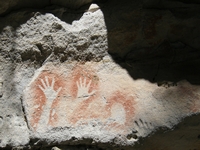
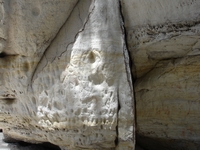
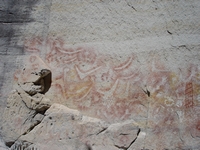
Carnarvon Gorge in the Carnarvon National Park
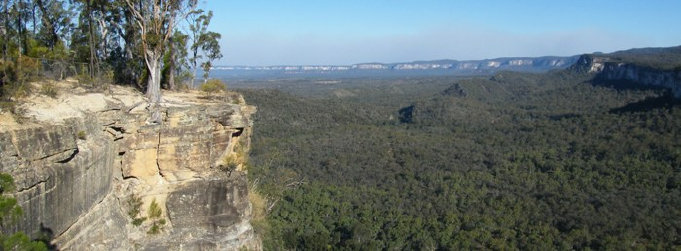
What we did and what we saw at Carnarvon Gorge
A short walk passing the tiny trickling Aljon Falls brings a delightful surprise. Wards C
anyon was once the seasonal home of the Ward brothers, possum hunters of the early 1900s. This pretty little pocket of remnant rainforest sees tree ferns share the moist atmosphere with giant King Ferns. The creek runs over red stained rocks and green waterweed creating a colourful picture. Carnarvon Gorge has the only colony of king ferns in central Queensland here in Wards Canyon, with the only other remaining colonies found only along the coast. At up to seven metres in length, the fronds of the King Ferns are amongst the largest of the world’s ferns. Enjoy the microclimate of this appealing refuge to cool down during the long walk.The ten kilometre walk trail along Carnarvon Creek as far as Big Bend is fairly flat and easy for all age groups and fitness levels,
but for the numerous crossings on stepping stones across the shallow creek. A hiking stick is ideal for balance when crossing
on these stepping stones, and you will find a pile of sticks left just after you cross the first bridge. We did not see these
on the way out so took sticks from the bush to use, leaving these too for others.
Starting with the hardest of the walks we planned to tackle, we climbed to the rim of the gorge at Boolimba Bluff 200 metres above Carnarvon Creek.
In all we walked at least 25 kilometres during our long day. Much of the walk was in partial shade, and with the mild weather walking was very pleasant. Our plan was to see only side features that were close to the trail on the outward walk, seeing as many of the others as time permitted on the return walk to be sure to return before dark. This way any missed would be nearer the start of the trail so could be seen another day.
Pit toilets are conveniently located in two locations part way along the creek walk and at the Big Bend Campground.
We chose to see The Art Gallery with Aboriginal rock paintings and etchings
on our way to Big Bend. Spray painted with red ochre, stencilled hands, axes and boomerangs make up the majority of the paintings. Explanation panels at these sites show what the paintings and etchings represent.
Carbon dating of campfire charcoal in
the floor deposits of this rock shelter show that Aboriginals occupied this site approximately 3,560 years ago.
While much of the paintings at this site have been stencilled, there are also freehand paintings as well as engravings. Stencil paintings were created by blowing a mixture of powdered pigment and water from the mouth around parts of the body such as hands and feet and around items used for hunting and as weapons. Boomerangs have been stencilled in rows, creating a pattern. Colours of red, orange, yellow, white and purple have been used.
It has been surmised that net patterns were made paint being
blown between fingers held slightly apart with many individual stencils making up the net. White nets were made in a later phase.
Red spade shaped stencils are believed to represent a type of flat bladed club, although no examples of such a weapon have been
found. Similarly the axe shaped stencils are thought to represent a type of wooden club, but again no examples have been found.
Double
armed forearm and hand stencils have only been found within the Carnarvon National Park. Also unique to the area is a large
painting of what is appears to be a humanoid spirit figure.
Just prior to Big Bend and the end of the marked walk trail, the narrow Boowinda Gorge has been carved by rushing water. The
striated sculptured walls were draped with creepers in the moister sections. Walking on the floor consisting of large stones
is slow but it is worth walking a little way along this cutting.
Next to a sheer white cliff, a ladder reaches up to a narrow fissure. Climb in and walk through a very narrow passageway to
where a majestic cavern opens up before you. The Amphitheatre has light grey walls reaching up for eighty metres. A bench
seat enables visitors to sit and try the acoustics by singing or playing a musical instrument.
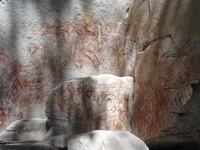
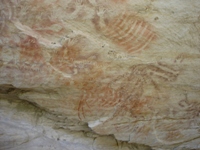
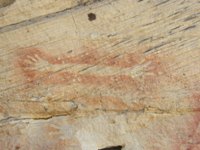
Returning we visited as many of the well known side features as time permitted. Cathedral Cave also has a selection of stencil
paintings, paintings and etchings.
While stencilled hands are prominent, this site also features animal tracks and emu
eggs. An etched wavy figure, probably representing a snake, extends for over ten metres. Many etchings are believed to
be of the human vulva and these are found on cliffs of the